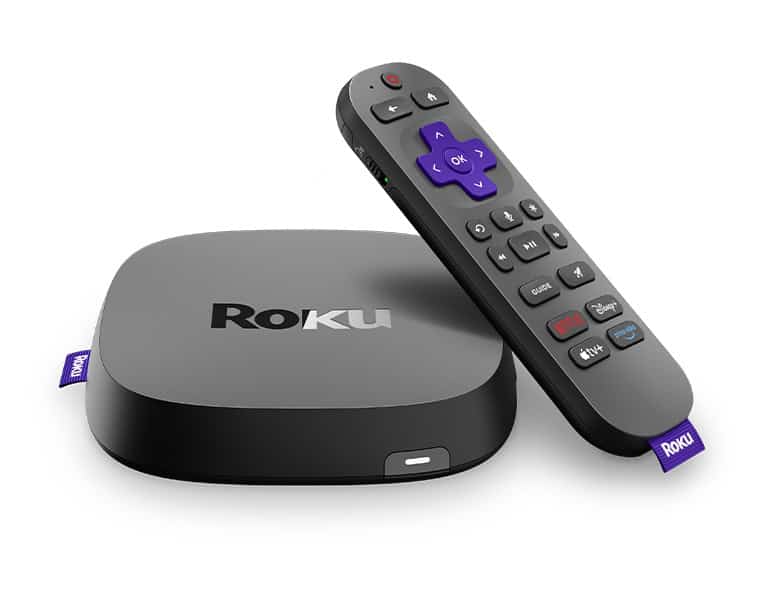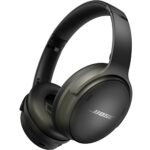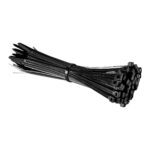Roku devices offer great streaming experiences, but sound issues can sometimes spoil the fun. If you’re facing audio problems with your Roku, don’t worry. Most Roku sound troubles can be fixed with simple steps like checking connections, adjusting settings, or restarting your device.
Let’s explore some quick fixes for common Roku audio issues. We’ll cover everything from no sound at all to volume control problems. You’ll learn how to troubleshoot your Roku TV, streaming stick, or player to get your sound back on track.
Here’s a quick guide to the most frequent Roku sound problems and their solutions:
| Problem | Quick Fix |
|---|---|
| No sound | Check HDMI connections |
| Low volume | Adjust TV and Roku volume |
| Audio out of sync | Restart Roku device |
| Sound cuts out | Update Roku software |
| Remote volume not working | Replace remote batteries |
Troubleshooting Roku Sound Issues
Experiencing audio problems with your Roku device? Don’t worry, it’s usually a simple fix. Here’s a guide to help you get the sound back on track.
Preliminary Checks
Before diving deeper, let’s start with the basics:
- Volume Level: It might seem obvious, but make sure your TV volume is turned up and not muted. Also, check the volume on your Roku remote.
- Physical Connections: Ensure all cables (HDMI, optical, etc.) are securely connected to your Roku, TV, and any soundbars or receivers.
- Roku Remote: Try new batteries in your Roku remote to rule out remote control issues.
- Power Cycle: Restart your Roku, TV, and any connected audio devices. Unplug them from the power outlet, wait a minute, and plug them back in.
Common Sound Issues and Solutions
If the basic checks didn’t resolve the problem, let’s explore some common sound-related issues:
1. No Sound at All
- Audio Settings: Go to Settings > Audio on your Roku. Ensure the audio mode is set to “Auto detect” or a compatible format for your setup.
- HDMI Cable: Try a different HDMI cable, as a faulty cable can cause audio problems.
- TV Input: Make sure your TV is set to the correct HDMI input that your Roku is connected to.
- Soundbar/Receiver: If you’re using a soundbar or receiver, ensure it’s powered on, set to the correct input, and the volume is turned up.
2. Sound is Distorted or Muffled
- Audio Format: Experiment with different audio formats in your Roku’s audio settings (Stereo, Dolby Digital, etc.).
- Wireless Interference: If you’re using a Roku Wireless Speaker, minimize wireless interference by keeping the speaker close to the Roku device and away from other electronic devices.
- Speaker Placement: Ensure your TV speakers or external speakers are positioned correctly for optimal sound.
3. Audio Delay/Out of Sync
- Audio Settings: Check for an “Audio delay” setting on your Roku or TV and adjust it to sync the audio with the video.
- Game Mode: If you’re gaming, enable “Game mode” on your TV to reduce input lag, which can sometimes cause audio delay.
- HDMI Cable: Try a different HDMI cable.
4. Sound Cutting Out Intermittently
- Wireless Interference: If using a Roku Wireless Speaker, check for sources of wireless interference.
- Cable Connections: Ensure all cables are securely connected.
- Network Connection: A weak Wi-Fi signal can sometimes cause audio dropouts. Try improving your Wi-Fi signal or use a wired Ethernet connection.
5. Sound Only From TV Speakers (When Using a Soundbar/Receiver)
- Audio Output Settings: On your Roku, go to Settings > Audio > Audio output and select the appropriate output (HDMI ARC, optical, etc.).
- TV Settings: Check your TV’s audio settings to ensure it’s set to output audio through the external audio device.
Advanced Troubleshooting
- System Update: Make sure your Roku device and TV have the latest software updates installed.
- Factory Reset: If other troubleshooting steps fail, you can try a factory reset on your Roku device. This will erase all settings and data, so make sure to re-link your accounts afterward.
Roku Support Resources
- Website: Visit the Roku support website for FAQs, troubleshooting guides, and contact information.
- Community Forum: The Roku Community forum is a great place to find answers and ask questions to other Roku users.
Tips for the Best Roku Audio Experience
- High-Quality Cables: Use high-quality HDMI cables for optimal audio and video transmission.
- Audio Settings: Experiment with different audio settings on your Roku and TV to find what sounds best for you.
- Wireless Speaker Placement: If using Roku Wireless Speakers, position them for optimal sound and minimize wireless interference.
- Soundbar/Receiver: Consider using a soundbar or receiver for a more immersive audio experience.
- Regular Updates: Keep your Roku device and TV software up to date for the latest features and bug fixes.
Initial Sound Troubleshooting Steps
When your Roku device isn’t producing sound, a few quick checks can often resolve the issue. These steps focus on examining your remote control and verifying your device connections.
Check Roku Remote and Volume Controls
Start by checking your Roku remote. Ensure it has fresh batteries and is properly paired with your device. Try adjusting the volume using the remote’s buttons. If the remote isn’t responding, you can reboot your Roku TV through the system settings.
Next, verify the volume settings on your TV. Make sure it’s not muted or set too low. Some Roku models have a separate audio menu. Navigate to Settings > Audio > Menu volume and adjust it to see if you can hear any sound.
Assess HDMI and Audio Connections
Inspect your HDMI connections. Unplug the HDMI cable from both your Roku device and TV, then firmly reinsert it. Try a different HDMI port on your TV if available. For optimal results, use a high-quality HDMI cable.
Check your TV’s audio output settings. Ensure it’s set to the correct audio format. You may need to adjust the HDMI audio settings on your Roku:
- Go to Settings > Audio
- Set HDMI to ‘Dolby D’ or ‘Dolby Digital’
- If that doesn’t work, try setting it to PCM-Stereo
| Connection Type | Troubleshooting Step |
|---|---|
| HDMI | Check cable, try different ports |
| Optical Audio | Verify cable connection, check TV settings |
| AV Cables | Ensure proper color-coded connections |
If you’re using external speakers or a sound system, verify those connections and settings as well.
Advanced Roku Audio Settings
Roku devices offer sophisticated audio options to enhance your viewing experience. These settings allow you to customize sound output and enjoy private listening through your mobile device.
Configure Audio Modes and Formats
Roku provides various audio modes to optimize sound quality. You can access these settings by going to Settings > Audio on your Roku device. The audio mode options typically include Auto, Stereo, and Dolby Digital.
Auto mode automatically selects the best audio format based on your connected devices. Stereo is ideal for basic TV speakers or headphones. Dolby Digital offers surround sound for compatible systems.
To change the audio format:
- Go to Settings > Audio
- Select HDMI
- Choose Dolby D or PCM-Stereo
If you experience sound issues, try switching between these formats. Some users report success by setting the audio to PCM-Stereo when facing audio problems.
Private Listening via Roku App
The Roku mobile app offers a convenient private listening feature. This allows you to listen to your TV audio through headphones connected to your smartphone or tablet.
To use private listening:
- Download the Roku app on your mobile device
- Connect your phone to the same Wi-Fi network as your Roku
- Open the app and select your Roku device
- Tap the headphone icon to enable private listening
You can adjust the volume using your phone’s buttons. This feature is perfect for late-night viewing without disturbing others.
| Feature | Benefit |
|---|---|
| Audio Modes | Optimize sound for your setup |
| Private Listening | Watch TV without disturbing others |
Remember to check your Roku’s menu volume settings if you have trouble hearing system sounds.
Troubleshooting Roku Hardware
When your Roku device encounters sound issues, hardware-related fixes often resolve them. These methods range from simple restarts to more comprehensive resets.
System Update and Restart
Keeping your Roku device updated is crucial for optimal performance. Check for system updates by going to Settings > System > System update > Check now. If an update is available, install it promptly.
A system restart can solve many audio problems. To restart your Roku:
- Unplug the power cable
- Wait 10 seconds
- Plug it back in
For Roku TVs, use the menu to restart:
- Go to Settings > System > Power
- Select System restart
Rebooting your Roku can resolve temporary glitches affecting sound output. This method works for Roku streaming sticks, Roku TVs, and devices connected to soundbars.
Factory Reset for Persistent Issues
If system updates and restarts don’t fix your sound problems, a factory reset might be necessary. This step erases all settings and returns your Roku to its original state.
To perform a factory reset:
- Go to Settings > System > Advanced system settings
- Select Factory reset
- Choose Factory reset everything
For Roku TVs, you can also use the physical reset button:
- Locate the reset button (usually on the back or bottom of the TV)
- Press and hold for about 20 seconds
After the reset, you’ll need to set up your Roku device again. Factory resetting can resolve persistent audio issues by clearing any corrupted settings or software conflicts.
| Reset Method | Difficulty | Data Loss |
|---|---|---|
| System Restart | Easy | No |
| Factory Reset | Moderate | Yes |
Addressing Common Roku Streaming Issues
Roku devices can experience audio problems specific to streaming content. HDMI ARC technology offers solutions for connecting sound systems.
Sound Issues Specific to Streaming Content
When streaming content on Roku, you might face audio problems. Check if the issue is limited to one channel or app. If so, exit and reopen the channel. This simple refresh often resolves the problem.
Adjust audio settings within problematic channels. While playing a video, press the star key on your remote to access the menu. Look for audio options there.
If the issue persists across all channels, try these steps:
- Reboot your Roku device
- Check HDMI connections
- Ensure your TV’s audio output is set correctly
For smart TVs with built-in Roku, go to Settings > System > Power > System restart to reboot the device.
Utilizing HDMI ARC for Sound Systems
HDMI ARC (Audio Return Channel) simplifies connecting your Roku to external sound systems. This technology allows audio to travel both ways through a single HDMI cable.
To use HDMI ARC:
- Connect your Roku to the HDMI ARC port on your TV
- Connect your sound system to the same HDMI ARC port
- Enable HDMI CEC in your TV’s settings
If you’re still not hearing sound, check your TV’s audio output settings. Make sure it’s set to output through HDMI ARC.
| Device | HDMI ARC Port |
|---|---|
| TV | Usually labeled “ARC” |
| Soundbar | Often the first HDMI port |
| Roku | Any HDMI port |
HDMI ARC simplifies your setup and improves audio quality. It’s especially useful for streaming high-quality content through your Roku device.
Frequently Asked Questions
Roku sound issues can be frustrating. These common questions address specific problems and their solutions to help you troubleshoot effectively.
Why is there no sound coming from my Roku TV even though it’s not muted?
Check your TV’s audio settings. Ensure the correct audio output is selected. Try switching between PCM and Dolby Digital. Reboot your Roku TV by unplugging it for 10 minutes, then plugging it back in.
How can I fix sound issues with my Roku device when using HDMI?
First, try a different HDMI port on your TV. Ensure your HDMI cable is securely connected. If the problem persists, try a different HDMI cable. Check if your TV’s audio output settings match your Roku device.
What should I do if I’m experiencing sound problems with my Roku sound bar?
Verify all connections are secure. Update your Roku sound bar’s firmware. Reset the sound bar by unplugging it for a minute, then plugging it back in. If issues continue, check your TV’s audio settings to ensure it’s set to output to the sound bar.
How do I restore sound on my Roku if a reset doesn’t fix the issue?
Contact Roku support for advanced troubleshooting. They may guide you through additional steps or determine if your device needs repair. Check your warranty status before seeking professional help.
What steps can I take when my Roku’s sound sporadically cuts out or keeps going out?
Check for interference from other wireless devices. Move your Roku closer to your router if using Wi-Fi. Ensure your Roku’s software is up to date. If the problem persists, try factory resetting your device.
Why is the sound not working in apps on my Roku TV?
Update the problematic apps. Clear the app’s cache and data. If issues continue, uninstall and reinstall the app. Check if the problem occurs in other apps to determine if it’s app-specific or a system-wide issue.
| Common Roku Sound Issues | Quick Fixes |
|---|---|
| No sound at all | Check connections, reboot device |
| Sound cuts out | Update software, check for interference |
| App-specific sound issues | Update or reinstall app |
| HDMI sound problems | Try different HDMI port or cable |
| Sound bar not working | Verify connections, update firmware |







